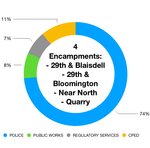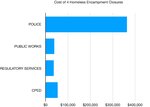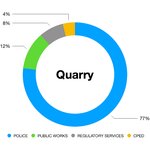






After public disagreements about how to manage tent communities last October, the Minneapolis City Council took up the issue again in April 2023. During a nearly three-hour long meeting, they reviewed a staff report about current practices and discussed recommendations about future changes.
“The Homeless Encampment Closures Report Presentation makes it clear that addressing the City of Minneapolis’s homelessness crisis requires a cross-departmental, and multi-agency effort; and, that we all need to lean in, in order to move forward,” said Ward 11 Council Member Emily Koski.
The opening and closing of tent communities, or encampments, has grown in recent years in Minneapolis.
In the summer of 2018, a tent community now known as the Wall of Forgotten Natives led to the establishment of a city-funded navigation center and shelter for the campers at Hiawatha Ave. and Cedar. The following year more tent communities were established. In 2020, during the pandemic, closing them was prohibited and dozens were established on park and other publicly owned land, as well as on private property. During that time the Minneapolis Parks and Recreation Board (MPRB) established a permit process for the camps. Some were forcibly closed with police involvement, and others were closed peacefully without police.
Following the election of 2021, city policymakers have not always agreed about to manage the encampments.
Following two closures of tent communities that involved police action and the establishment of a small tent community outside city hall in October 2022, a motion was made by Ward 10 Council Member Aisha Chughtai. She proposed pausing the closures where police force people to move out with little or no notice or assistance. It was defeated on a 7 to 6 vote, with council members Michael Rainville, LaTrisha Vetaw, Jamal Osman, Lisa Goodman, Andrea Jenkins, Emily Koski, Andrew Johnson, and Linea Palmisano voting no.
Those council members also voted to stop proposals that would have required access to shelter and seven days notice before a forced closure. Motions that passed, directing staff to report on the impacts of camp closures and ways to minimize police involvement, were vetoed by mayor Jacob Frey and the veto was sustained.
Weeks later, however, Chughtai proposed a more modest directive with the support of the mayor and it passed.
‘DANGERS OF NORMALIZING CAMPS’
Minneapolis Director of Regulatory Services Saray Garnett-Hochuli led the team presenting the subsequent report on April 11.
Using the 35-page report, she detailed information about four of the encampments that were closed this year. It graphically illustrated health and safety concerns, and what Garnett-Hochuli called “the dangers of normalizing encampments.” It highlighted 911/311 call details, minors being in the camps, poor hygiene, drug use, violence, weapons, and fire hazards.
Living in tents has been illegal in Minneapolis since at least the 1970s, although since 2005, there have been provisions in ordinance that were not mentioned in the presentation that staff “may issue a permit to allow for temporary housing when a specified emergency creates the need to allow for such housing.”
Garnett-Hochuli referred to that ordinance 244.60 when she said, “The city upholds this ordinance to maintain public safety for all people in Minneapolis. This means that the city does not provide handwashing stations or other sanitary services at encampment sites as doing so is indirectly in conflict with 244.60. More importantly, providing handwashing stations and sanitation services normalizes the presence of encampments throughout Minneapolis.”
In the lengthy committee discussion after the presentation, Chughtai pointed out conflicts in the code between this and the section on maintaining public health.
“Hand washing stations are a critical part of keeping infections from happening and spreading,” she said. “Why is the enforcement of 244.6 more important to us as an institution than our responsibility to public health? ... We are falling short of our obligations for maintaining public health.”
RESPECT AND DIGNITY?
Garnett-Hochuli explained that the city uses a cross-departmental team that meets weekly to review health, safety, and community impacts in advance of making any decisions about camp closures. For camps on city-owned property, they sometimes provide at least 72-hours notice and post notices of trespass and closure dates. They forcibly close a camp without notice if they determine it poses imminent community safety risks, if threats are made to city employees, if there has been an increase in violence or other illegal activities or if it is interfering with the normal operation of a business, school, daycare, or sober living facility, or they determine it “poses an imminent danger to human life or safety.”
A set of guiding principles was also shared stating that the city is dedicated to “facilitating encampment closures where unsheltered individuals are treated with respect and dignity.” During the discussion Chughtai confirmed that residents of the camp were not interviewed for, or quoted in, the report, and were not asked if they felt they were being treated with dignity or respect.
Near the conclusion, Garnett-Hochuli said that the city has moved through “the first phase of encampment work,” and was now entering a second phase that would “expand on the public health crisis that addresses the root causes of homelessness, led by the health department.” The next phase will also include behavioral crisis response teams, and the new commissioner of health Damon Chaplin will play a leadership role.
MINNEAPOLIS HOPE 1
Among the several pages of recommendations, one new program was outlined called “Minneapolis Hope 1” that would be part of the police department’s community engagement bureau. As a “one-stop mobile unit that could have supplies on hand, including water, snacks, and winter gear,” it could respond to encampment sites, as well as provide storage and services for several days prior to and during a closure. The mobile unit could include police in plain clothes, health care professionals, behavioral crisis responders, social workers, case managers, substance abuse specialists and nurses.
“I appreciate these recommendations,” said Ward 13 Council Member Linea Palmisano. “I just want to recognize and commend the growing coordination all these departments have had here.”
“There were recommendations and next steps given in the Homelessness Encampment Closures Report Presentation, and I look forward to re-evaluating after the implementation of these recommendations and next steps,” said Koski several days later. “And, I look forward to us continuing to open lines of communication across departments within the City of Minneapolis, and across agencies working with the City of Minneapolis, moving forward.”
CLOSING FOUR CAMPS COSTS $493,548
In the report the staff used the encampments closures at 29th and Blaisdell, 29th and Bloomington, Near North, and the Quarry as case studies. They determined that the community planning and economic department spent $2,985, the police $363,700, public works $7,963, and regulatory services $17,815 for a grand total $392,464 just for the personnel for closing these four tent communities. When additional planning, equipment and contracting costs were included, the total cost was $493,548.
Chughtai used these figures and identified between 45 and 60 tent encampments that were forcibly closed since 2020. “That adds up to somewhere between $5.5 and $7.5 million we’ve spent on this practice alone,” she said. “I want us to sit with that and I want us to think about how this approach has to change for the safety of our staff – if prioritized – and if the safety of our community is prioritized.”
“That’s work that all of us have to do together,” said Chughtai.
For more, visit https://lims.minneapolismn.gov/File/2023-00368
Comments
No comments on this item Please log in to comment by clicking here